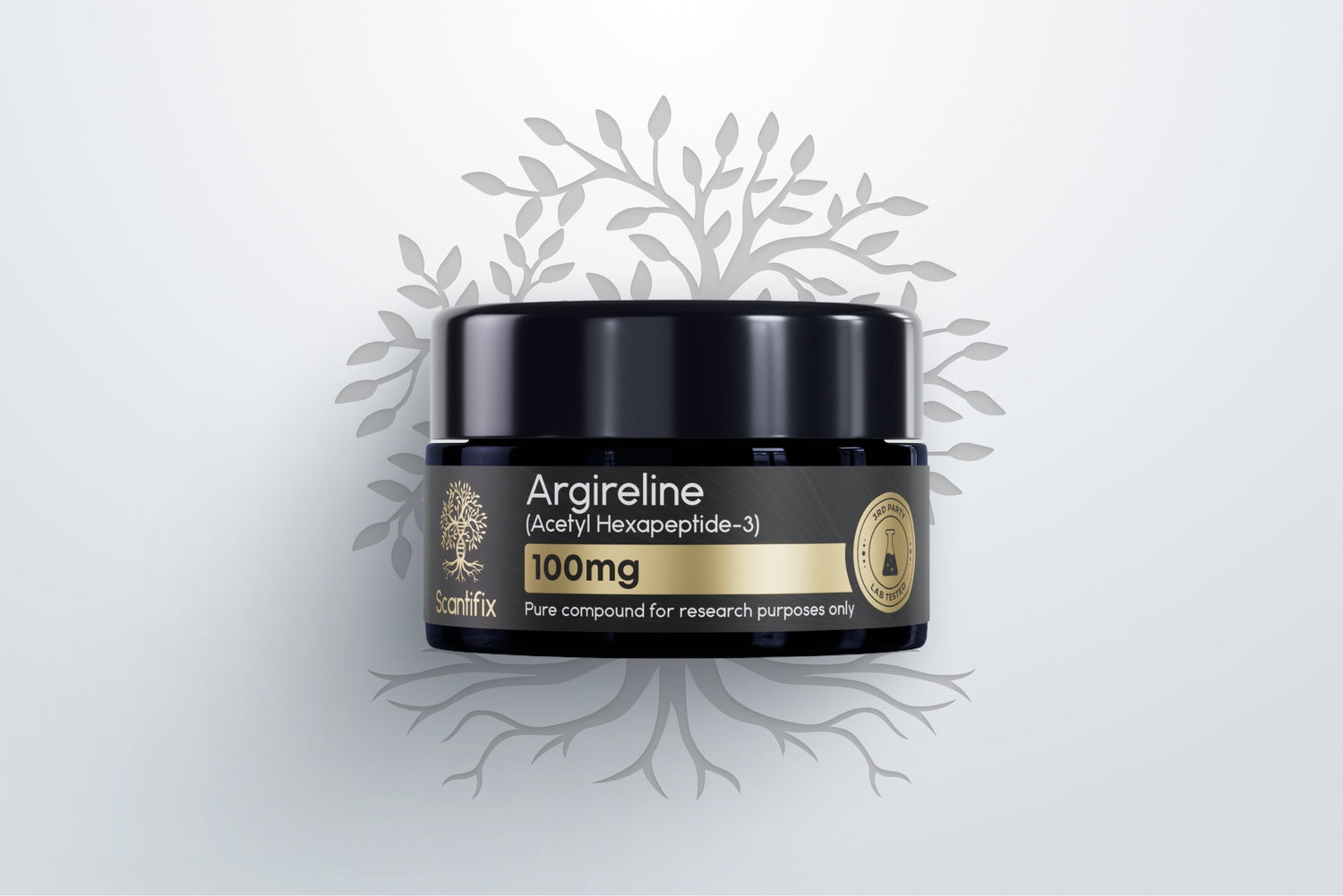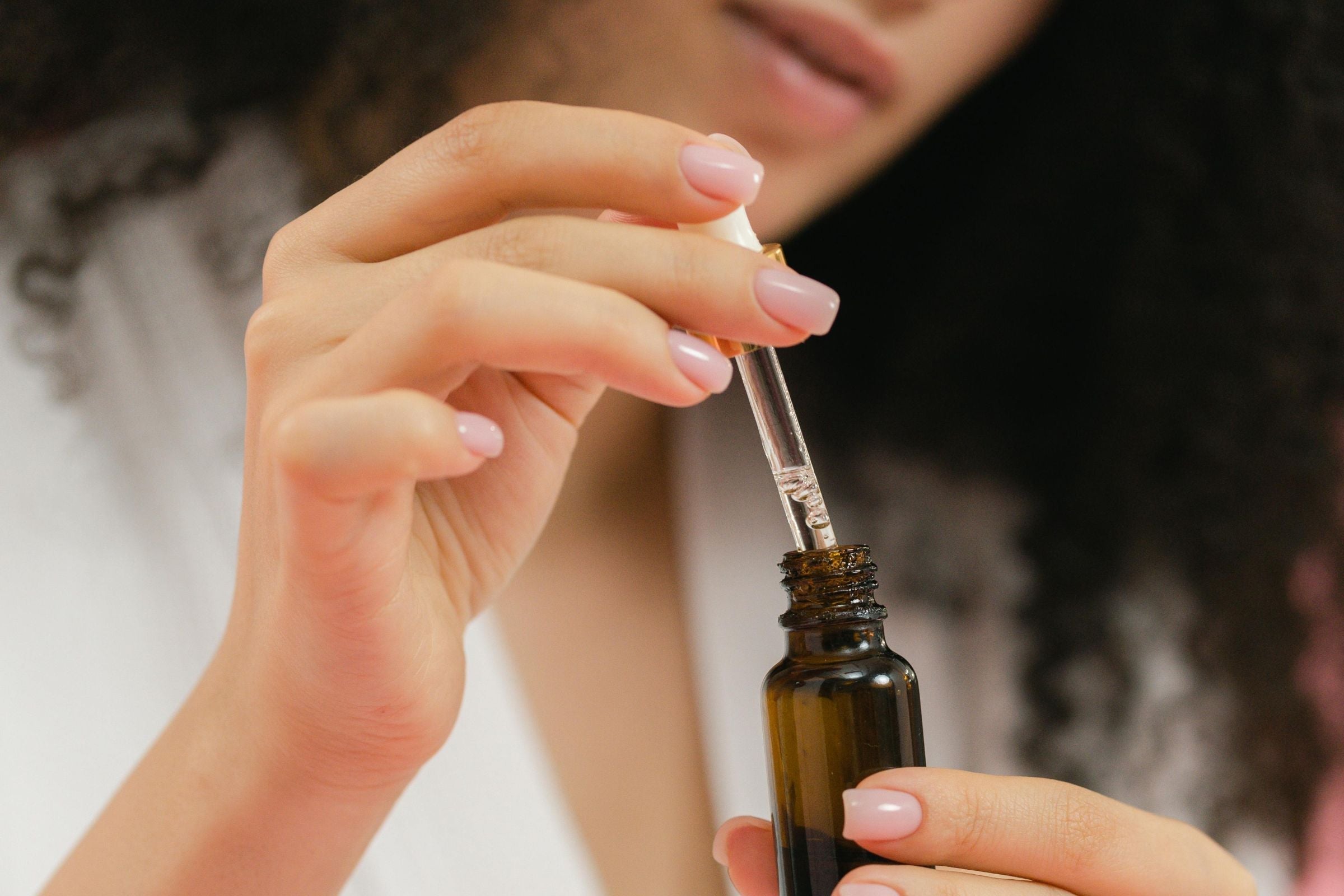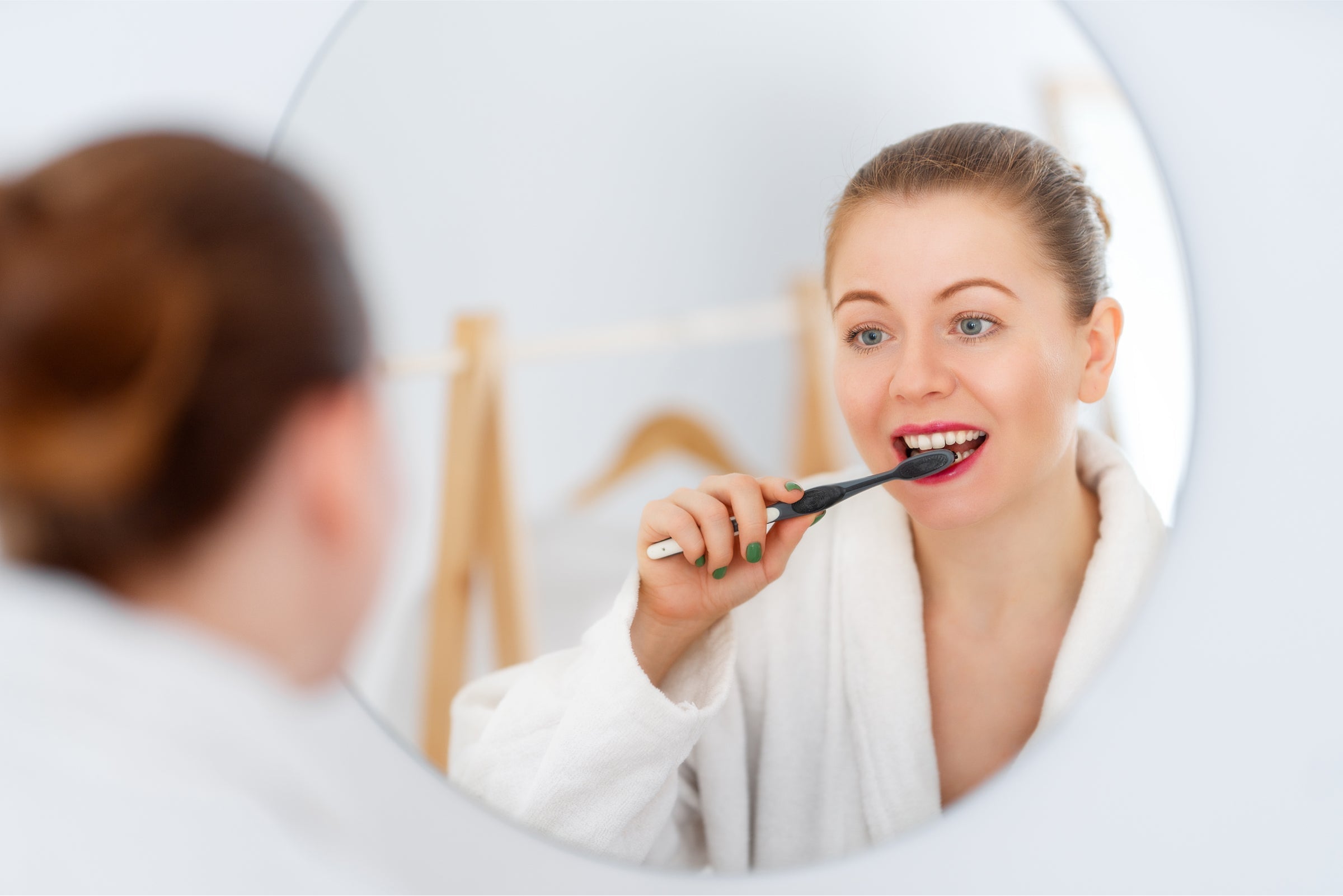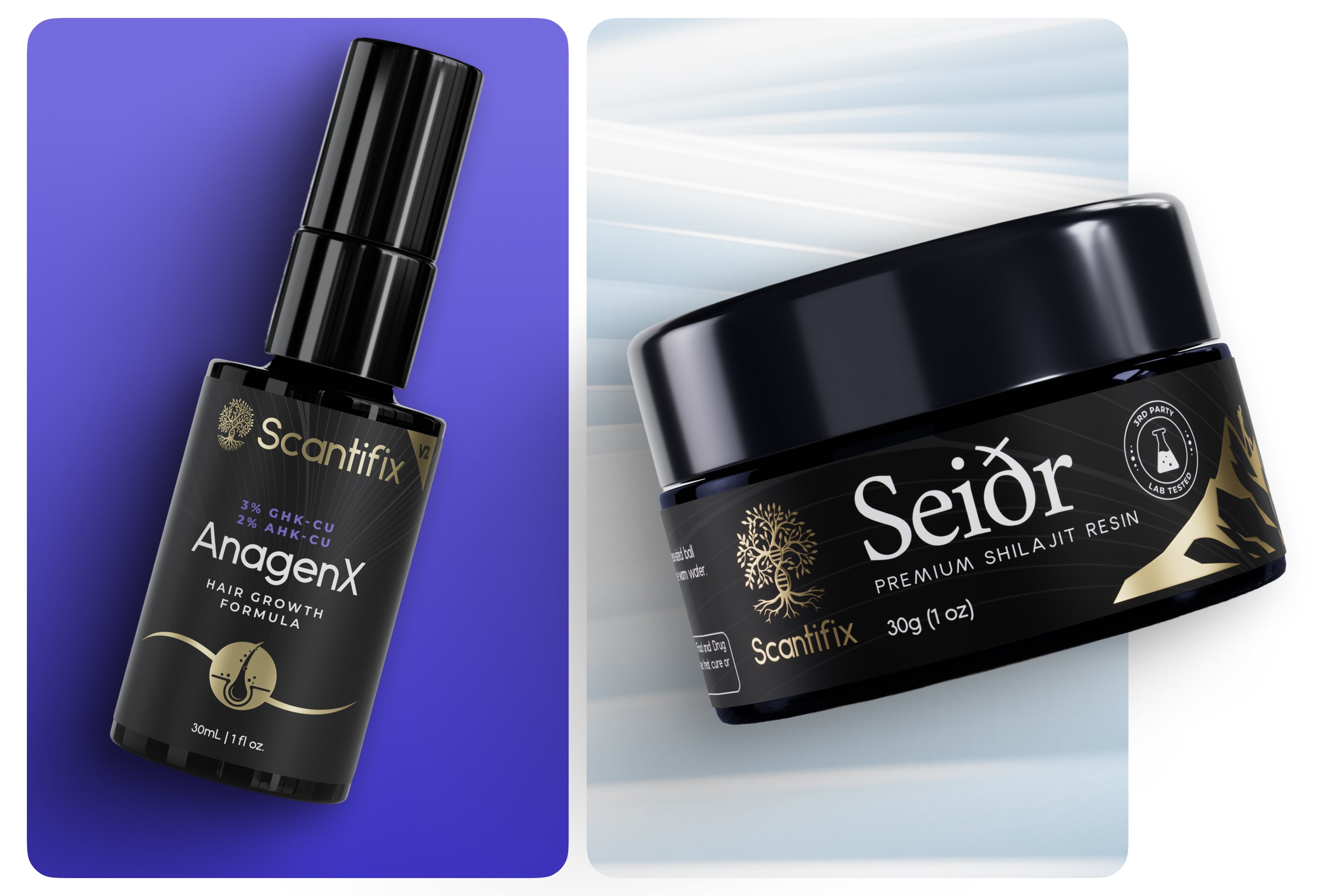Expression lines are unavoidable. Facial movements like squinting, smiling, and raising your eyebrows are a natural part of everyday life. Over time, those repeated movements show up on our skin as small creases, which eventually deepen into more permanent wrinkles.
For those who want to minimize expression lines, treatments typically fall into two extremes: topical creams that provide hydration but deliver limited results, or injectables that work effectively but alter natural movement and require ongoing clinical visits.
Between these extremes lies another path—peptide science. Neuromodulatory peptides like Argireline work to soften expression lines without erasing natural movement, offering a biologically guided, non-invasive approach to smoother skin.
In this guide, we'll explore what Argireline is, how it works at the cellular level, and what makes it unique compared to other skin-smoothing peptides.
What Is Argireline?
Argireline is recognized as the first neuromodulatory peptide ever developed for cosmetic use. It's a small, synthetic hexapeptide derived from SNAP-25, a protein central to neurotransmitter release. The peptide was specifically designed to interrupt the chain of events that drives muscle contractions beneath the surface (Blanes-Mira et al., 2002).
Neuromodulatory peptides like Argireline work at the nerve–muscle level, gently reducing the repetitive contractions that lead to expression lines. Unlike injectables, which paralyze muscles, Argireline provides a subtler effect: easing the intensity of contractions without halting expression entirely. This balance between efficacy and gentleness makes it a good option for those who want visible improvement while maintaining a natural look.
So how exactly does Argireline achieve its effects at the biological level?
How Argireline Works in the Skin
To understand how Argireline works, start with a normal muscle contraction. When you smile or squint, your nerves release a chemical messenger called acetylcholine. This messenger tells muscle cells to contract, which creates movement. Over time, this leads to the lines that we see on the surface.
For acetylcholine to be released, the nerve uses a group of helper proteins called the SNARE complex. Argireline works by mimicking one of those proteins, known as SNAP-25. By acting as a stand-in, it disrupts the complex and reduces acetylcholine release (Blanes-Mira et al., 2002).
With fewer signals getting through, muscles contract less intensely. That gentler contraction means less folding of the skin above, allowing expression lines to gradually soften. And because Argireline only tempers the signal rather than blocking it entirely, natural facial expression remains intact. This avoids the "frozen" look sometimes associated with injectables.
Clinical evidence supports this mechanism. In a four-week trial, participants who applied topical Argireline twice daily showed an average 48.9% reduction in wrinkle depth around the eyes, with no irritation reported (Wang et al., 2013). These findings show how Argireline's biological action translates to real, visible improvements in skin smoothness.
Benefits of Topical Argireline
The biological mechanism is valuable to understand, but the practical outcomes matter most. Here are the ways Argireline may benefit your skin:
-
- Reduction of fine lines and wrinkles: By easing the contraction signal, Argireline directly reduces the depth of expression-related lines such as crow’s feet and forehead creases (Wang et al., 2013; Palmieri et al., 2020).
- Improved skin texture: As repetitive folding lessens, the surface of the skin appears smoother and more even, giving a more rested and youthful look (Palmieri et al., 2020).
- Gentle and non-invasive: Argireline achieves results with a low risk of irritation and no downtime, offering a gentler alternative to more intensive cosmetic procedures (Wang et al., 2013; Palmieri et al., 2020).
- Preventive support: With consistent use, Argireline can slow the development of new lines by reducing the mechanical stress that eventually etches them into the skin.
- Cumulative improvement: Clinical studies show measurable benefits develop over weeks of consistent use, with some users noticing visible smoothing earlier in the process (Wang et al., 2013; Palmieri et al., 2020).
As the first topical peptide of its kind, Argireline is well established for its benefits in anti-aging, both as a preventative and corrective tool. However, since its introduction, other topical peptides have entered the scene with different approaches to aging. Let’s examine how they compare.
Argireline Compared to Other Anti-Aging Peptides
Neuromodulatory peptides work at the nerve-muscle level, but they're just one category. Signal peptides, for example, smooth and firm skin by prompting cells to boost collagen, elastin, and other structural proteins (Pintea et al., 2025). Seeing where Argireline fits among these options helps clarify how it can support an effective skincare strategy.
Neuromodulatory Peptides
Argireline vs. SNAP-8
SNAP-8 was developed as an extension of Argireline, with two additional amino acids that improve flexibility and binding (Nguyen et al., 2024). Both peptides have been shown to reduce wrinkle depth, but results can vary depending on your skin’s unique needs. Often, they are used together for complementary results.
Argireline vs. Leuphasyl
Leuphasyl also reduces acetylcholine release, but by binding to a different receptor involved in the contraction signal. Argireline interrupts the SNARE complex, while Leuphasyl modulates the signal upstream (Dragomirescu et al., 2014). When combined, they target multiple stages of muscle signaling.
Argireline vs. Serpen-Syl
Serpen-Syl is a tripeptide designed to mimic a protein found in snake venom that blocks muscle receptor activation (Khalid et al., 2015). It achieves a similar outcome to Argireline through a different biological route. Argireline is well studied and widely used, while Serpen-Syl offers a newer alternative that some formulas combine with it for complementary effects.
Signal Peptides
Signal peptides take a different approach entirely, stimulating collagen and elastin production rather than affecting muscle activity.
Argireline vs. Matrixyl
Matrixyl focuses on stimulating collagen and elastin, strengthening the skin’s foundation rather than muscle signaling (Pintea et al., 2025). Where Argireline addresses dynamic wrinkles, Matrixyl supports static wrinkles and firmness.
Argireline vs. Syn-Coll
Syn-Coll boosts collagen synthesis and protects against breakdown (Pintea et al., 2025). Unlike Argireline, it doesn’t affect muscle movement, but it helps improve elasticity and resilience.
Argireline's extensive clinical track record and established safety profile make it both a reliable starting point for those new to peptides and a proven staple for anyone seeking effective anti-aging results. It works well on its own or combined with complementary peptides to address multiple aspects of skin aging.
Argireline in Skincare Products
Argireline is versatile and available in several forms that suit different preferences and levels of customization:
-
- Raw peptide powder: Raw, lyophilized (freeze-dried) Argireline can be reconstituted with sterile water or compatible carriers like hyaluronic acid to create custom serums. This offers maximum control over concentration and pairing with other actives.
- Professional serums and creams: Many ready-to-use formulations feature Argireline in stable concentrations, often combined with hydrating agents and barrier-supporting ingredients.
- Peptide stacks: In both DIY serums and ready-made formulas, Argireline is commonly paired with peptides like SNAP-8 and Leuphasyl. Each peptide acts at a different stage of the contraction process, providing a layered strategy for smoothing expression lines (Khalid et al., 2015).
However you choose to incorporate Argireline, the product's quality determines whether you'll achieve noticeable results.
What to Look for in High-Quality Argireline Products
Unfortunately, not all peptide products are created with the same level of care. Quality varies widely in the cosmetic peptide market, and inferior products can deliver disappointing results or even irritation. Here's what to look for:
-
- Purity: At least 98%, confirmed by independent third-party testing.
- Transparency: Brands should provide Certificates of Analysis (COAs) and disclose exact concentrations.
- Formulation integrity: Avoid unnecessary fillers, alcohols, or fragrances that may irritate or destabilize the peptide.
- Protective packaging: Violet or amber glass helps shield peptides from light and oxidation.
- Sourcing standards: Reliable suppliers disclose their laboratory processes and stability testing.
Products meeting these standards help ensure the Argireline you use remains stable, effective, and safe for your skin.
Final Thoughts
Argireline pioneered the use of neuromodulatory peptides in skincare, and decades later, it remains both relevant and effective. As the first peptide to demonstrate that topical formulations could soften expression lines, it established the scientific foundation for the advanced peptides that followed. By targeting the earliest step in the muscle contraction process, it provides a biologically guided way to reduce wrinkle depth and prevent new lines from forming—all without needles, irritation, or the "frozen" look of injectables.
At Scantifix, we provide high-purity, rigorously tested Argireline and other peptides in raw format, giving you the flexibility to create tailored serums that match your specific goals. With clean formulations and transparent sourcing, our aim is to support effective, results-driven skincare you can trust.
References
- Blanes-Mira, C., Clemente, J., Jodas, G., Gil, A., Fernández-Ballester, G., Ponsati, B., Gutierrez, L., Pérez-Payá, E., & Ferrer-Montiel, A. (2002). A synthetic hexapeptide (Argireline) with antiwrinkle activity. International Journal of Cosmetic Science, 24(5), 303–310. https://doi.org/10.1046/j.1467-2494.2002.00153.x
- Dragomirescu, A., Andoni, M., Ionescu, D., & Andrei, F. (2014). The efficiency and safety of Leuphasyl—A Botox-like peptide. Cosmetics, 1(2), 75–87. https://doi.org/10.3390/cosmetics1020075
- Khalid, F., Gorouhi, F., & Maibach, H. I. (2015). Anti-aging topical peptides and proteins. In Z. Draelos (Ed.), Cosmeceuticals and active cosmetics (3rd ed., pp. 327–344). CRC Press. https://doi.org/10.1201/b18895-17
- Nguyen, T., Lee, J., & Kim, S. (2024). Sustainable dynamic wrinkle efficacy: Neuromodulatory peptide analogs for vegan-friendly formulations. Cosmetics, 11(4), 118. https://doi.org/10.3390/cosmetics11040118
- Palmieri, B., Noviello, A., Corazzari, V., Garelli, A., & Vadalà, M. (2020). Skin scars and wrinkles temporary camouflage in dermatology and oncoesthetics: Focus on acetyl hexapeptide-8. Clinica Terapeutica, 171(6), e435–e442. https://www.researchgate.net/publication/346649024
- Pintea, M., Popescu, R., & Ionescu, M. (2025). Peptides: Emerging candidates for the prevention and treatment of skin senescence. Biomolecules, 15(1), 88. https://doi.org/10.3390/biom15010088
- Schagen, S. K. (2017). Topical peptide treatments with effective anti-aging results. Cosmetics, 4(2), 16. https://doi.org/10.3390/cosmetics4020016
- Wang, Y., Wang, M., Xiao, S., Pan, P., Li, P., & Huo, J. (2013). The anti-wrinkle efficacy of Argireline, a synthetic hexapeptide, in Chinese subjects. American Journal of Clinical Dermatology, 14(4), 277–284. https://doi.org/10.1007/s40257-013-0009-9






Leave a comment
All comments are moderated before being published.
This site is protected by hCaptcha and the hCaptcha Privacy Policy and Terms of Service apply.